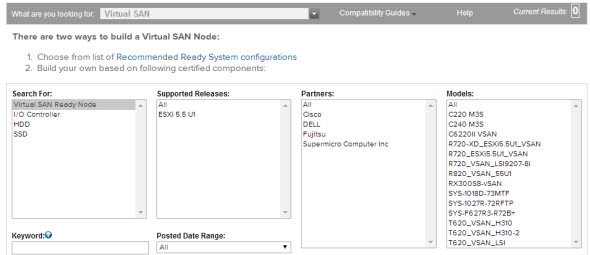A new PDF VSAN Hardware design Guide 1.0 has been released by VMware recently. This guide, called VMware® Virtual SAN™ Hardware Guidance help out with the designing the necessary hardware for VMware VSAN.
Even if blade servers are supported for VSAN, they're not optimal because of their limited space to hold disk groups. Also extensibility of blades is very limiting. But they're supported. Then rack or tower type of servers are more and better due to their design and spacing inside. I think that rack servers are optimal for datacenter types of installations where tower based servers can fit into ROBO scenarios as the cost is IMHO the lowest.
There is many factors to consider to design a VSAN based architecture from the materiel point of view. The PDF depicts several different zones which needs to be considered:
- Flash Drives (SSDs) – type, capacity, MTBF – rule thumb is 10% of SSDs for 90% of Spinning disks for projected capacity. And the SSD drives must support 10 full writes per day.
- Spinning Disks (HDDs) – also called magnetic disks. Type 7200 up to 15000 RPM, number of spinning disks etc.
- Storage Controler cards – 4 types listed (Virtual SAN SAS, Virtual SAN SATA, Virtual SAN RAID0 and Virtual SAN Pass-Through)
- Network bandwidth – 1Gb dedicated or 10Gb shared with Network IO control.
On the screenshot below you can see that you got the choice between Virtual SAN ready node OR the individual components (I/O controller, HDD, SSD).

The flash device were categorized into classes in VMware compatibility guide:
- Class A: 2,500–5,000 writes per second
- Class B: 5,000–10,000 writes per second
- Class C: 10,000–20,000 writes per second
- Class D: 20,000–30,000 writes per second
- Class E: 30,000+ writes per second
VMware VSAN is new technology which is revolutionizing the old school “shared storage” architectures. The new aproach by “baking” the storage into the kernel, new design options are now possible as the technology is production ready. Several choices to implement this technology is possible as one can consider designing the VSAN node from scratch (via HCL) or another option is to take a VSAN ready node.( a host ready for VSAN). This URL is important – it's the one for VMware VSAN.
The author of the document is Wade Holmes (VCDX 15) – @wholmes
Source and download link: VMware vSphere Blog
